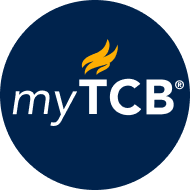
The nature of work and the workplace are rapidly changing—and talent strategies are also changing. There’s evidence that a small number of companies are pivoting to a skills-based approach to talent development to address skills gaps through upskilling and reskilling their existing workforces; to build new, future-focused skills; and to tap into contingent workers for specialized projects or tasks.
The disruption of the COVID-19 pandemic is leading to a new willingness to consider how to redesign work around workers’ individual needs and circumstances.1 Companies at the forefront of the pivot to a skills-based approach include several technology firms, including IBM, Cisco and Google, and other notable industry leaders such as Unilever and Schneider Electric.
The problem is that job frameworks may be too rigid for companies operating in unpredictable or rapidly changing skills environments. Jobs are evolving fast; one prediction is that 50 percent of all employees will need reskilling by 2025, and 40 percent of current workers’ core skills are expected to change between now and 2025.2 These trends present the real danger of selecting and developing workers for jobs that soon may disappear, or which are changing to an unrecognizable extent due to technology integration, automation, and AI-based augmentation.3 T

myTCB® Members get exclusive access to webcasts, publications, data and analysis, plus discounts to events.
